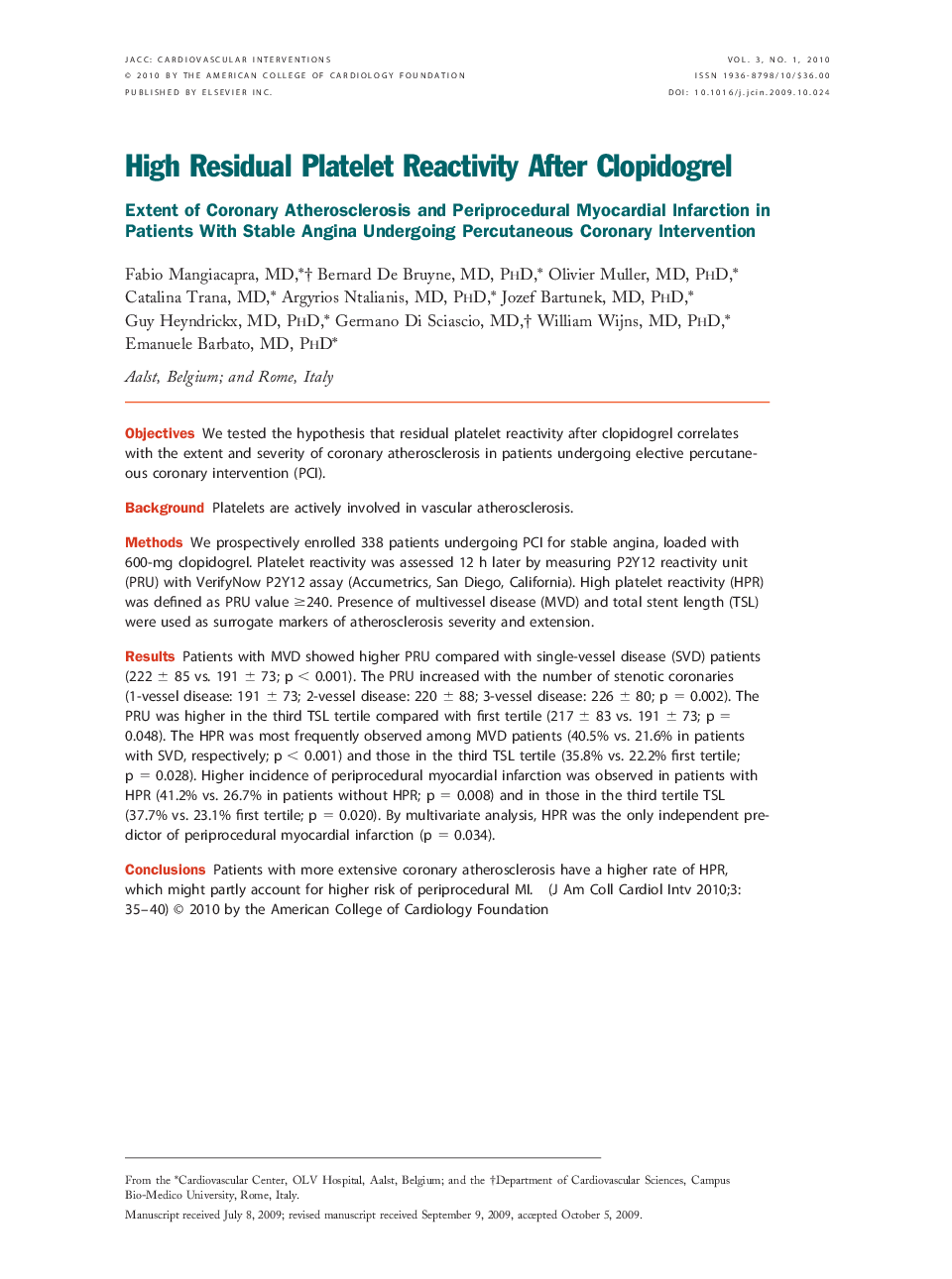| کد مقاله | کد نشریه | سال انتشار | مقاله انگلیسی | نسخه تمام متن |
|---|---|---|---|---|
| 2941513 | 1177074 | 2010 | 6 صفحه PDF | دانلود رایگان |

ObjectivesWe tested the hypothesis that residual platelet reactivity after clopidogrel correlates with the extent and severity of coronary atherosclerosis in patients undergoing elective percutaneous coronary intervention (PCI).BackgroundPlatelets are actively involved in vascular atherosclerosis.MethodsWe prospectively enrolled 338 patients undergoing PCI for stable angina, loaded with 600-mg clopidogrel. Platelet reactivity was assessed 12 h later by measuring P2Y12 reactivity unit (PRU) with VerifyNow P2Y12 assay (Accumetrics, San Diego, California). High platelet reactivity (HPR) was defined as PRU value ≥240. Presence of multivessel disease (MVD) and total stent length (TSL) were used as surrogate markers of atherosclerosis severity and extension.ResultsPatients with MVD showed higher PRU compared with single-vessel disease (SVD) patients (222 ± 85 vs. 191 ± 73; p < 0.001). The PRU increased with the number of stenotic coronaries (1-vessel disease: 191 ± 73; 2-vessel disease: 220 ± 88; 3-vessel disease: 226 ± 80; p = 0.002). The PRU was higher in the third TSL tertile compared with first tertile (217 ± 83 vs. 191 ± 73; p = 0.048). The HPR was most frequently observed among MVD patients (40.5% vs. 21.6% in patients with SVD, respectively; p < 0.001) and those in the third TSL tertile (35.8% vs. 22.2% first tertile; p = 0.028). Higher incidence of periprocedural myocardial infarction was observed in patients with HPR (41.2% vs. 26.7% in patients without HPR; p = 0.008) and in those in the third tertile TSL (37.7% vs. 23.1% first tertile; p = 0.020). By multivariate analysis, HPR was the only independent predictor of periprocedural myocardial infarction (p = 0.034).ConclusionsPatients with more extensive coronary atherosclerosis have a higher rate of HPR, which might partly account for higher risk of periprocedural MI.
Journal: JACC: Cardiovascular Interventions - Volume 3, Issue 1, January 2010, Pages 35–40